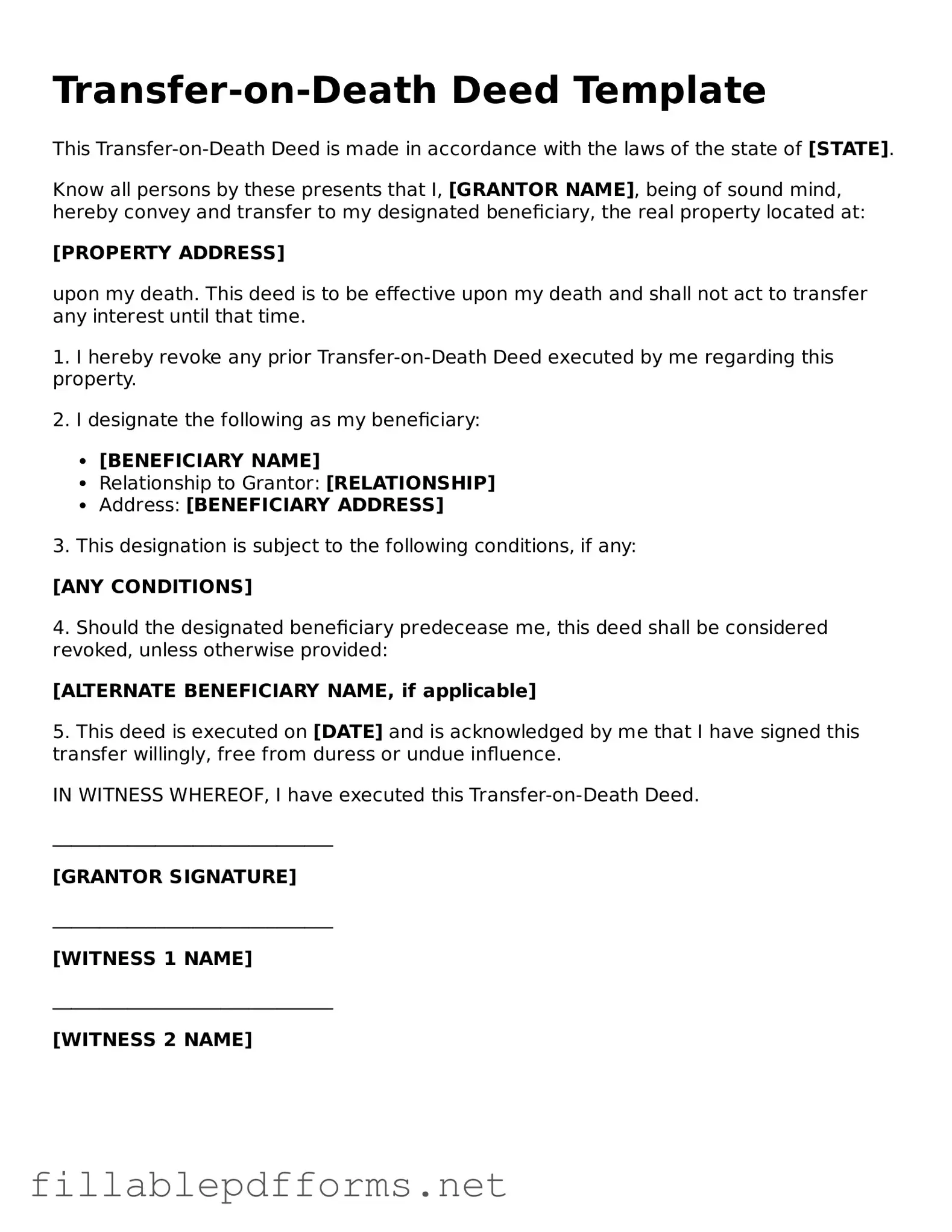The Transfer-on-Death Deed (TOD Deed) serves as a valuable estate planning tool that allows individuals to transfer real property directly to designated beneficiaries upon their death, bypassing the often lengthy and costly probate process. This deed can be an effective way to ensure that property is passed on according to one’s wishes without the need for a will or trust. By completing and recording the TOD Deed while still alive, the property owner retains full control over the property during their lifetime, including the ability to sell or modify the property without any restrictions. The form requires specific information, such as the legal description of the property and the names of the beneficiaries, to be valid. Importantly, the transfer occurs automatically upon the owner’s death, provided the deed has been properly executed and recorded. This method not only simplifies the transfer process but also can help avoid potential disputes among heirs, as the intended recipients are clearly identified. Overall, the TOD Deed offers a straightforward approach to property transfer, making it an appealing option for those looking to streamline their estate planning efforts.
